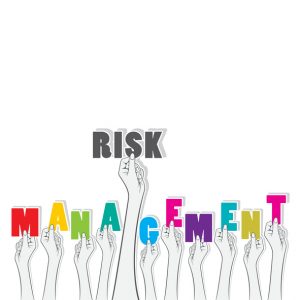- Maximizing After Tax Proceeds When Selling Your Business - June 7, 2024
- Understanding the Accredited Investor Rule 501 of Regulation D - February 27, 2024
- Which is Best – Business Broker, M&A Advisor, or an Investment Banker? - October 2, 2023

How could there be risks in your business relationships? For most business owners who’ve started a business from scratch, the notion of regarding as risky the many positive relationships they’ve built over the years with customers, vendors, and even employees is indeed a difficult concept to wrap their head around.
How could a customer who pays their invoice in a timely manner pose a business risk to you?
How could the company’s biggest vendor possibly be a problem?
And how could your most valuable employee – the one who stays late to get the job done and never complains – ever be your business’ downfall?
The answers to these questions have nothing to do with the great relationships you have built or with the underlying value of your customers, vendors, or employees. Rather it has everything to do with the unknown changes inherent in such relationships which no one can predict.
Change is an Inevitable Business Risk
Seasoned business owners understand that change in their business is inevitable and, when embraced, often results in growth. In fact, it often has been my observation that the most difficult, unforeseen changes result in the greatest opportunities for business and personal growth.
And for those business owners who choose to ignore or resist change, their path to success is perilous and they most often fail.
Why is there such a wide disparity between the two outcomes? It’s a very simple concept: the successful prepare for the inevitable and those who stumble and fall, refuse to do so.
Let’s review the three greatest business risks. Then we’ll cover how to prepare for them.
Customer and Industry Concentration Risks
Customer and industry concentration can be a problem in almost any business. Having more than 8% of the business revenue coming from one customer defines an undesirable customer concentration risk. And having the top three customers producing more than 20% of the business’ revenue is equally undesirable.
The loss of any one or more of these top customers for any business can be problematic.
You may be thinking that won’t happen to me because the owners of these businesses are my friends. They won’t abandon me or my business.
While that may be true, changes in your relationship with your top customers may not be a decision within their control or yours. They may be forced to close their business due to changes in their marketplace. They may die and their families may take over operating the business. And a hundred other things may happen over which you have zero control.
Similarly, your business may be serving a single or only a few industries, which is an industry concentration. For example, you may enjoy a special place working with medical device companies and your reputation has drawn several large accounts in this industry to your business. Such an industry concentration within your customer base is ultimately undesirable. It’s a business risk which you are unable to transfer to an insurance company!
I can hear your objections. You’re thinking “Wait a minute, I’ve worked hard to develop a niche for my business. It’s been a lot of hard work building the relationships I have in this industry. And now finally I’ve become a recognized player in this niche. And now, you’re telling me it’s considered a business risk?”
If you’re business has either a customer or industry concentration risk it’s understandable if you feel frustrated – or even insulted a bit – when you discover others regard your business as risky.
But the truth is lenders, investors, and business buyers are very good at evaluating business risks. And customer and/or industry concentration risks are on top of their radar screen.
Vendor Concentration Risk
Similarly, your business may be relying on one or two vendors that are critical to your ability to deliver products and services to your customers.
If this vendor suffers a disaster or is forced to go out of business, consider the consequences it may have on your business. Would your business be able to meet its obligations to its customers, employees, lenders, etc.?
Do you have an alternative supplier or service provider that would step in? And how long would that type of vendor transition take to get your business back on track?
Ask yourself these simple questions. Your answers will tell you what you need to do. And do it now.
Employee Talent Retention Risk
As a business grows and matures from a startup to a viable (and valuable) enterprise, the risks associated with retaining talented employees rises. Without these employees, your business would not be excelling. And that’s why the relationship between you and your employees is so vital to your long-term business and personal success.
Working with business owners who intend to sell or transfer their business to others, gives me a first-hand opportunity to observe how much can go wrong when selling a business. And without a doubt when selling a business, the human resources risk – specifically, key employees – is a very high risk.
Additionally, it’s not unusual for businesses in the growth stage to encounter major problems with key employees when communication is lacking and it’s not clear to employees what their rights and responsibilities truly are.
Good communications with key employees regarding their responsibilities and holding them accountable is not easy. In fact, I believe it is the single, most difficult goal for a business leader and owner.
Your Call To Action to Reduce Business Risks
The steps needed to address the inherent risks in your business relationships are an example of Napoleon Hill’s philosophy that accomplishments are achievable through persistence and good old-fashioned hard work. He believed “strength and growth come only through continuous effort and struggle.”
If you want to reduce business relationship risks, you’ve got some work to do…
1. Prepare yourself mentally for inevitable changes in your business and the relationships you’ve built. Holding onto the past is not a recipe for business success.
2. Evaluate your customer list to determine if you have a Customer Concentration (or Industry) Risk and work on reducing the concentration.
3. Build a contingency plan to address any vendor concentration risk.
4. Start the employer-employee relationship with a written Employee Agreement that spells out the confidential nature of their work, who owns the intellectual property developed in the business, how trade secrets are proprietary to the business, and whether employees are permitted to solicit your customers and employees if the employee ceases to be employed. And if you haven’t taken the steps to protect your relationship with employees, do so now. It’s not too late.













